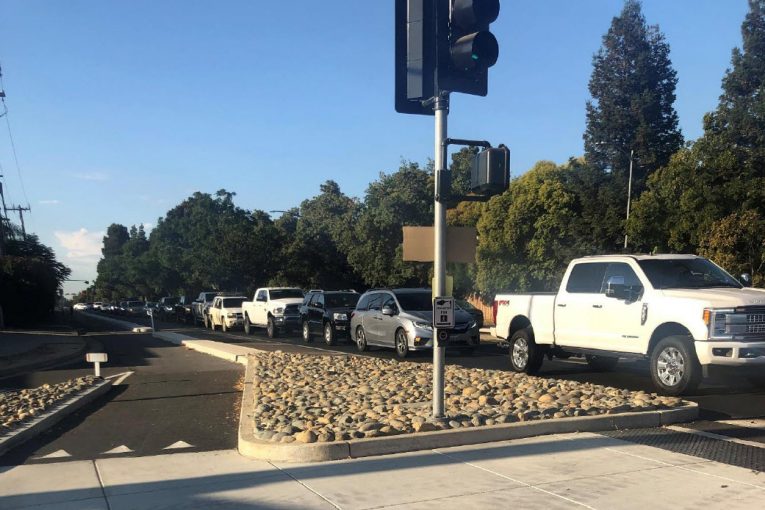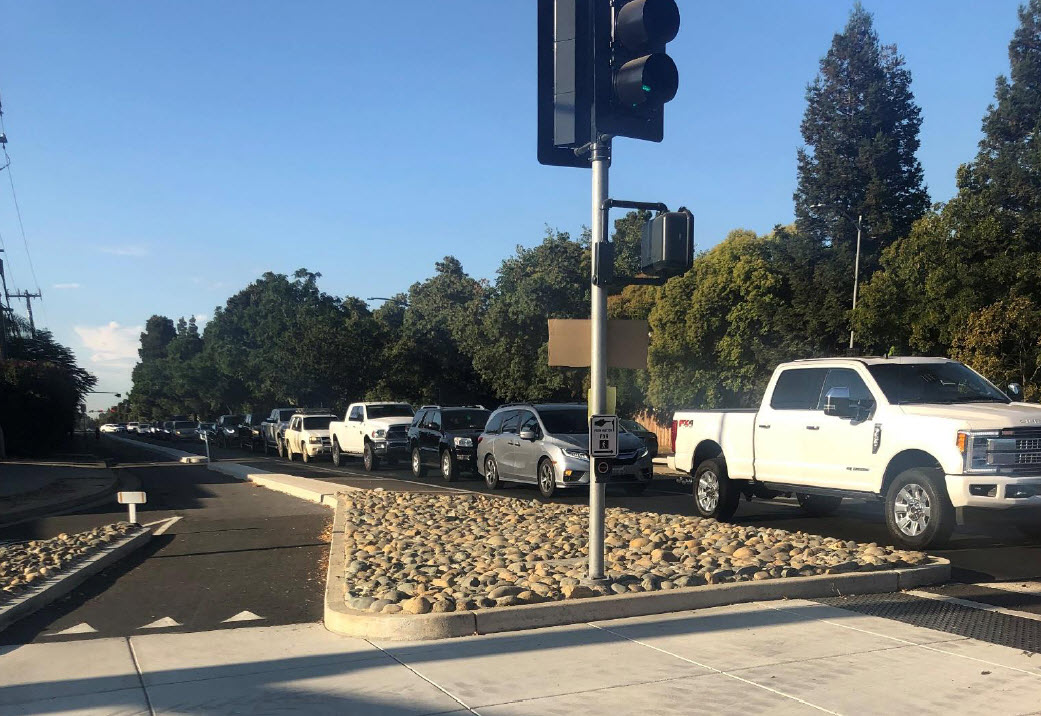

By David M. Greenwald
Executive Editor
Davis, CA – The city first started seeing complaints about traffic on Mace following the original redesign in 2018. It has taken over four years since the first public meetings in 2019, but the council on Tuesday will be asked to award a reconstruction contract and exempt the project from CEQA.
“This item is the last in a series of actions by the City Council to bring resolution to this corridor’s design and construction,” writes city staff. “The redesign process began in 2019 in response to concerns on the original projects’ effect on traffic flow. The scope of the Mace Boulevard Improvement project that began construction in 2018 was to resurface Mace and improve non-motorized transportation along the corridor.”
Staff notes that following construction, “in response to community concerns and traffic flow challenges, the City dedicated staff and resources to engage with the community and key stakeholders, including Yolo County, to arrive at a project that strikes the right balance of vehicular and bike/pedestrian access and safety, while addressing fundamental challenges of I-80 congestion impacts on our local road network as has been prevalent with the use of traffic apps that reroute drivers through Tremont Road and up Mace Boulevard when traffic slows on the I-80 corridor.”
Staff is recommending Option A which would exclude an optional cycle track extension or Option B which would have the cycle track extension and comes at a somewhat higher cost. This “[a]wards the project Mace Blvd Reconstruction Contract – Option A to McGuire & Hester in the amount of $2,009,820 with a construction contingency of 10% ($201,000) and authorizes the City Manager to execute the contract.”
The total cost to the project including the amount previously encumbered is nearly $3 million.
“Funding for this work will come from funds allocated to CIP No. ET8257, Mace Blvd Corridor Phase II project, which is funded by Construction Tax (200) from development, Roadway Impact Fees (485) from development, Gas Tax (109), and Redevelopment Successor Agency funds (476),” staff writes, meaning none of the money would come from the city’s General Fund.
Phase 1a will include:
- Two full-width southbound traffic lanes between Cowell Blvd. and N El Macero Dr. (with a one-way, Class 4 protected bike lane and modified median) for the benefit of public safety and farm vehicles. This includes reducing the width of the median and adding some additional landscaping.
- Modifications to the striping between San Marino Ave. and N. El Macero Dr. to accommodate two northbound travel lanes along the full length of the roadway while maintaining the bike buffers.
- Modifications to the protected intersection at Cowell/Mace, including accommodation for truck-turning radii and modifications to the signal timing and operations.
- Reduction or reconfiguration of the islands at San Marino Ave. and replacement of the flashing red beacon with less obtrusive device.
- Modifications to on-street parking on the west side of Mace Blvd. south of N. El Macero Dr. to San Marino Ave. to accommodate access/wheelchairs at more regular intervals.
- Two full-width northbound traffic lanes between N El Macero Dr. and Cowell Blvd.
Phase 1b (to occur after Phase 1a is complete) will include:
- Pilot project metering traffic light simulation at Tremont Rd. and Mace Blvd. (and 30 days later at Montgomery Ave and Mace Blvd.), with details approved by and full participation in planning by city and county (including development of “decision” metrics for which of the two locations piloted will be evaluated). City will pay the costs. City and county will each independently determine whether or not to commit to a permanent project based upon factors, such as traffic improvement, impact of the signal on residents and businesses and any unintended consequences.
Phase 2 may include:
- Adding two northbound travel lanes from Redbud Dr. to San Marino Ave. after determination of successful traffic light pilot and City/County agreement for permanent metering light.
- Continued consideration of additional right turn lane northbound at Cowell Blvd. in the future.
- Other project modifications not covered in the above and as described in the exhibits.
“The CEQA documentation filed for the original project was a categorical exemption,” staff adds. “We have reviewed the new scope with the environmental consultant and they have confirmed that this is still the appropriate document.”


Is there a visual of the differences in Option A and Option B?
It’s a betrayal of the Commons and of the City’s symbol and oft-repeated climate change and related goals to prioritize traffic lanes above bike lanes, and to sacrifice (median, in this case) trees instead of traffic lanes for bike lanes… the latter, in other words, is putting people on bikes – or really kids on bikes riding to elementary school – against trees, really, the Greater Arboreal World. It’s a sad, sad day… There’s no “restoration” — the four lanes of Mace are no exiled monarch, and they certainly ain’t democracy – automobilist entitlement is getting its way, once again. Look around: Davis is not getting better for walking and cycling. Anyone who has encouraged this motorized farce will have to face their own conscience. Eastbound congestion will continue as government leaders more or less ignore solutions such as better regional rail transport or modifications to the interchange of CA-113 and EB I-80.
I could care less about walking and cycling in Davis. The silent majority share my viewpoint.
A monumental waste of local road improvement dollars to add a lane that isn’t even needed 90% of the time and will continue to be a source of gridlock during the other 10% of the time when I-80 commuters will fill all available space regardless of how many lanes are provided. The real irony is that the loudest voices calling for this misallocation of funds are El Macero residents who don’t pay city property taxes. A city council with real guts would just say NO.
Agreed, if you’re referring to the FIRST TIME they should have said “no” to SACOG money. Which they’re now forced to “undo” – at the city’s expense.
Given its high usage, Interstate 80 should be widened to a minimum of 5 or 6 lanes each way from New York City to San Francisco.